
All categories
Featured selections
Trade Assurance
Buyer Central
Help Center
Get the app
Become a supplier

(427 products available)
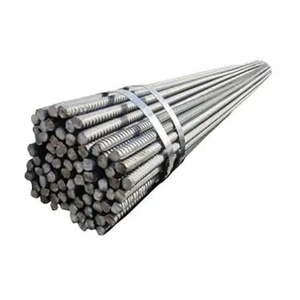


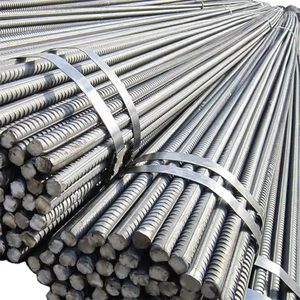












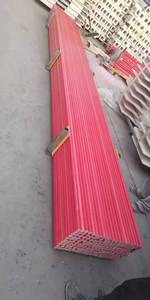



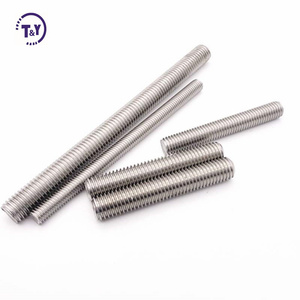







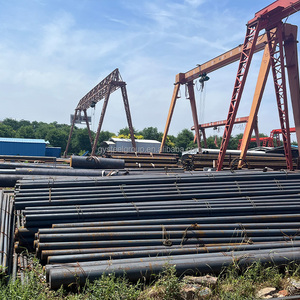











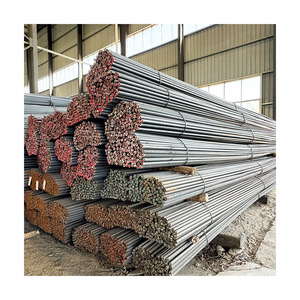

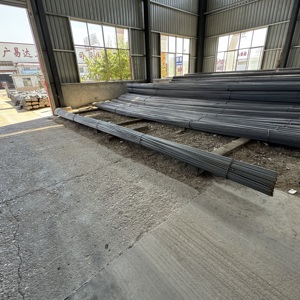



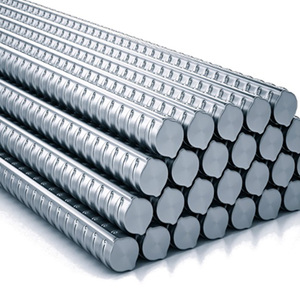





Reinforcement bars with a 20 mm diameter come in various types, each serving specific needs in construction. These bars are crucial for providing tensile strength to concrete structures. Below are the common types primarily used in construction.
Steel Reinforcement Bars
20mm steel rebar is one of the most frequently used bars in concrete reinforcement. It is made of carbon steel and is known for its high tensile strength. It also has a ribbed surface for better mechanical bonding with concrete. This type of rebar is applicable in almost all types of construction, be it residential, commercial, or infrastructure projects. Its durability and flexibility make it ideal for both normal and high-stress environments.
Epoxy-Coated Reinforcement Bars
Epoxy-coated rebar is a steel bar coated with a layer of epoxy resin. This rebar is designed to resist corrosion and is particularly suitable for areas exposed to moisture or chemical environments. Therefore, they are ideal for marine structures, bridges, and parking garages. The coating helps extend the lifespan of the rebar, thus making it a cost-effective solution in the long run.
Stainless Steel Reinforcement Bars
Stainless steel rebar is renowned for its corrosion-resistant properties. Therefore, it is suitable for high-humidity and salty environments. Although it is more expensive than carbon steel alternatives, it offers a much longer lifespan. This makes it ideal for mining, marine, and chemical plants. Its anti-corrosion properties save maintenance costs and reduce the need for replacement.
Galvanized Reinforcement Bars
Galvanized rebars are steel bars coated with a layer of zinc. Just like the epoxy coated rebar, this provides a protective barrier against corrosion. They are often used in conditions where the concrete cover may be compromised. These conditions include near coastal areas or in a chemically aggressive environment. The zinc acts as a sacrificial layer, ensuring that the steel beneath remains protected even when the surface is scratched or damaged.
Welded Wire Reinforcement
Welded wire reinforcement consists of a series of steel wires arranged in a lattice and welded together. It is designed to provide uniform support across the concrete. This can be particularly useful in slabs and pavements that undergo moderate to low tensile stresses. It is much easier and quicker to install compared to traditional rebar, thus enhancing construction efficiency.
A 20 mm diameter reinforcement bar is extremely versatile. It finds both structural and non-structural use across a wide range of industries. This is largely due to its strength and flexibility in almost all construction type settings. Below are the common industrial applications.
Construction Industry
The primary use of rebars, including the 20 mm diameter bar, is in the construction industry. They provide tensile strength in concrete structures such as beams, slabs, and columns. Therefore, these bars are indispensable in high-rise buildings, bridges, and highways. This is because they ensure the structure can handle heavy loads without collapsing or cracking.
Infrastructure Projects
20 mm rebars are especially used in large-scale infrastructure projects. This includes roads, railways, and tunnels. Here, they aid in providing the necessary support for heavy vehicular and mechanical loads. In bridge construction, these bars help in improving flexural capacity and extending the lifespan of the structures. This in turn enhances their ability to withstand constant vibration and weather elements.
Industrial Construction
In industrial buildings, especially factories and warehouses, heavy machinery and large equipment are frequently installed. This often leads to increased strain on the structures. Therefore, a 20 mm rebar is critical in these constructions as it provides additional strength. They prevent cracks and structural failures under heavy loads. It is also useful in constructing floors that need to support heavy loads in such settings.
Road and Pavement Design
Reinforced concrete roads and pavements employ 20 mm diameter rebars. They help improve the durability and load-bearing capacity of these surfaces. The bars distribute the stress uniformly across the pavement. This in turn reduces the tendency of cracks to develop under heavy traffic or in extreme weather conditions. It also extends the lifespan of roads, thus reducing the long-term maintenance costs.
Marine Structures
The 20 mm diameter bar is also used in the construction of piers, docks, and seawalls. Since these structures are continually exposed to water and salt, it makes the diameter of the bar critical for providing the necessary corrosion resistance. These bars help maintain the structural integrity of marine facilities. This ensures the structures can withstand the harsh marine environment without degrading rapidly.
Dimensions
The 20 mm rebar diameter size makes it suitable for medium to large-scale reinforcement needs. It does also have a standard length that ranges from 6 meters to 12 meters. These can however be customized depending on construction requirements.
Yield and Ultimate Strength
Typically, 20 mm rebars have a yield strength of around 500 MPa. In general terms, yield strength is the point at which the metal starts to deform permanently. Their ultimate tensile strength usually ranges from 600 MPa to 700 MPa. This is the maximum stress the bar can handle before breaking.
Weight
A 20 mm reinforcement bar has an approximate weight of 2.49 kg per meter. Therefore, a standard 12-meter rod weighs around 29.88 kg. This moderate weight allows for easier handling on the construction site, without compromising strength.
Surface Design
The surface of 20 mm bars commonly feature ribs or lugs. This is to enhance the bond between the rebar and the surrounding concrete. The rib pattern usually varies based on international standards. Nevertheless, it is designed to assure optimal grip and minimize slippage as concrete cures and hardens around the rebar.
Preparation and Setting
The installation of the rebar commences with preparation of the site and concrete formwork. To set up the rebar, builders position the 20 mm bars within the formwork or around the concrete area that is to be reinforced. They ensure the bars are properly aligned to the desired spacing and depth. This allows for adequate concrete coverage over the rebar. To maintain alignment, tie the bars together using rebar ties or wire. This ensures they do not move when concrete is poured.
Rebar Spacers
Using rebar spacers or chairs further ensures that the bars are elevated within the form. This guarantees that they are within the centerline of the poured concrete. The spacers should be evenly distributed throughout the formwork to support the rebar grid and prevent sinking.
Pouring Concrete
Once the rebar is adequately positioned and secured, concrete is poured over the bars. During this process, caution needs to be taken to avoid disturbing the rebar setup. The poured concrete should fully envelop the bars for proper reinforcement integration.
Vibration and Finishing
To enable even distribution and eliminate air pockets once the concrete is poured, builders vibrate the concrete. This helps it settle around the rebar. Proper finishing is then done. This includes leveling the concrete surface to achieve the required finish before it begins curing.
Corrosion Resistance
In case the building or structure is exposed to harsh environmental conditions, such as coastal regions with high salt exposure, going for a 20 mm epoxy rebar or stainless-steel rebar is important. These rebars offer superior protection against corrosion as opposed to regular steel rebars. Selecting a corrosion-resistant bar helps in extending the lifespan of the structure and in minimizing long-term maintenance costs.
Chemical Resistance
Similar to how corrosion resistance affects the rebar choice above, chemical resistance is equally important in environments where concrete might be exposed to chemical agents. For instance, in industrial settings or wastewater treatment facilities, chemicals can degrade standard steel rebars. Opting for galvanized or stainless steel rebar makes sure that the bars resist chemical reactions. Thus, they help in maintaining the integrity of the structural reinforcement intact.
Weldability
Depending on the construction method, weldability might be a key consideration when choosing 20mm rebar. This is particularly true when rebars are fabricated on-site or need to be tied together in complex structural forms. ASTM A706 or low-carbon steel rebars are highly weldable. This makes them ideal for projects that require frequent welding. Using weldable rebar helps maintain the tensile strength. It therefore ensures proper load distribution throughout the reinforced concrete.
Load Bearing Capacity
The standard 20 mm rebar is conventionally used for moderate to heavy loads construction. These include high-rise buildings, bridges, and industrial floors. They provide tensile strength to resist cracking or structural failures. They also offer additional support in thick concrete sections. In these two major types of construction, the diameter contributes to increased pull-out resistance. Hence makes it suitable for use in withstanding loads and forces over the lifespan of the structure.
Cost and Budget
The cost is an important factor when selecting the 20 mm diameter rebar to use. Standard carbon steel rebar is the most economical choice. It is mostly used in normal constructions without harsh environmental exposure. If budget allows, corrosion-resistant options like epoxy-coated or galvanized rebars offer longer-term savings. These are because they reduce maintenance needs. Therefore, balance the upfront cost against long-term durability. This will ensure that a proper investment is made that meets both performance needs and budget constraints.
The rebar's main function is to offer tensile strength to concrete. It equally helps prevent cracking and structural failure by distributing loads uniformly throughout the structure. The 20 mm size is ideal for providing such reinforcement in thick concrete sections.
They usually come in steel, stainless steel, galvanized steel, or an epoxy-coated steel. Each material offers unique benefits. These include corrosion resistance, durability, and cost-effectiveness, depending on the environmental conditions and project requirements.
Yes, there is. Galvanized and stainless steel rebars are ideal for construction projects done in environments that are likely to expose the rebar to moisture, salt, or chemical agents. These two varieties offer superior corrosion resistance compared to carbon steel. This makes them a preferred long-term solution since they require little to no maintenance at all.
The rib patterns are designed to enhance the bar’s mechanical bond with the surrounding concrete. They ensure that as the concrete sets around the bar, a strong bond forms, thereby preventing the rebar from slipping under tension.
The rebar is positioned within formwork and tied together to form a grid before pouring the concrete. Care is normally taken to ensure the rebar stays in place during the concrete pour. This enables the rebar to be fully surrounded by the poured concrete.